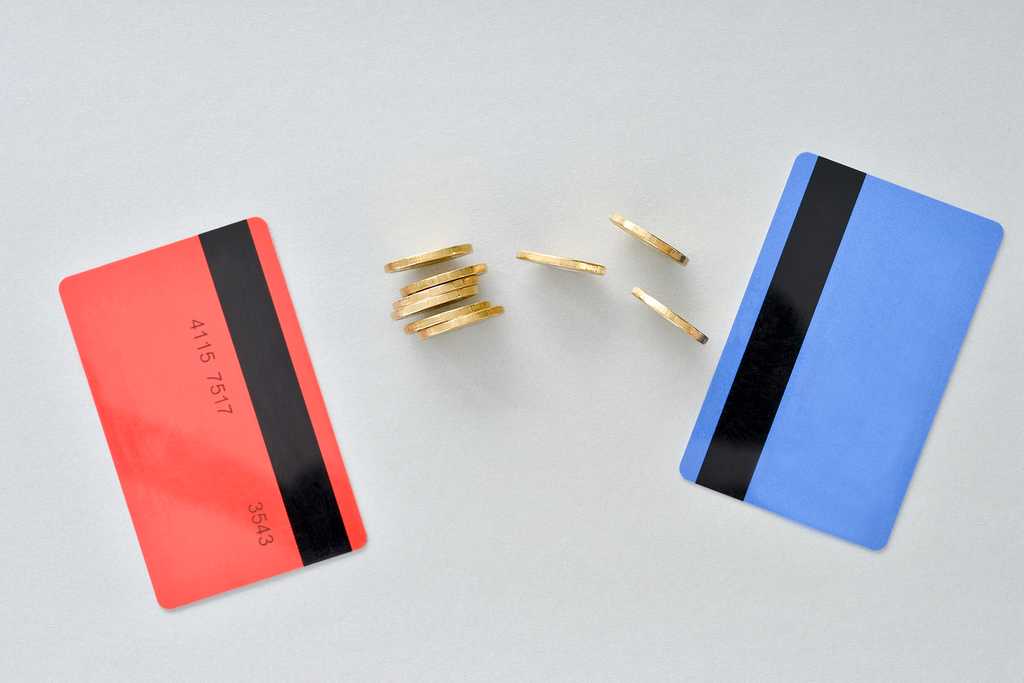If you have high-interest debt or you’re looking for a way to simplify your debt payments, you might want to consider a balance transfer. If you’re able to secure a balance transfer credit card with a 0% introductory APR, it’s possible to lower your debt and pay it off faster.
What is a balance transfer?
A balance transfer is a process where you move debt from one source (or multiple sources) to one credit card. The goal is to find a credit card with a lower interest rate than you currently have so you can save money. You may choose to initiate a balance transfer to secure a lower interest rate or to simplify debt repayment through consolidation.
How does a balance transfer work?
Many balance transfer credit cards come with an introductory interest rate of 0% for a certain number of months. This allows you to transfer your debt from another credit card or loan and accumulate no interest for the intro period, usually between six and 18 months.
If used strategically, a balance transfer can save you a lot of money by reducing the amount of interest you pay. Instead of paying interest of 20% or higher on a credit card, you can potentially pay no interest for the introductory period.
You can also use a balance transfer credit card to consolidate your debts. This can simplify your debt repayment process. Rather than trying to remember to pay various debts on different days of the month, you can focus on making a single payment with a lower interest rate.
How to Do a Credit Card Balance Transfer
To conduct a balance transfer, you can follow these steps.
- Assess your current debt situation: How much debt do you have, and what interest rates are you paying on your current loan or credit card? You need to know your current debt situation so you can look for a balance transfer credit card with a lower interest rate and a credit limit large enough to transfer your total current debt.
It’s also helpful to think about how you got into debt in the first place. You can use this information to create a plan to avoid going into debt again in the future. A balance transfer can be a useful tool to help you pay off your debt, but if you’re not committed to a repayment plan, it won’t stop you from accumulating more debt. - Select a balance transfer credit card: Research the different balance transfer credit cards available and choose the one that best fits your needs. You’ll want to look for a balance transfer card with a 0% introductory APR period that gives you enough time to repay your debt. You will also want to confirm that you are eligible for the 0% intro rate based on your credit score.
Before choosing a card, you will also want to consider the fees associated with each option. Many cards charge a balance transfer fee which varies from 3% to 5% of the amount you intend to transfer. So, if you want to transfer $3,000, the transfer fee could range from $90 to $150. It’s important you compare how much it will cost you to make the transfer versus how much you could potentially save if you do the transfer. - Apply for a balance transfer credit card: You can usually apply for a balance transfer credit card online or over the phone. To qualify for a balance transfer credit card, you will typically require a good to excellent credit score (690 or higher). The better your credit score, the better the terms you can get with a transfer card. For instance, you might be able to secure a higher credit limit or a better APR.
- Start the transfer process: If you are approved for a balance transfer credit card, your next step is to contact the prover to initiate the transfer. You will likely need to provide your old account numbers and also provide the balance of the debt you want to transfer. The transfer can take anywhere between a few days to over a month to complete. Make sure to pay the minimum balance on your current credit card until the transfer is complete.
- Pay the balance: Once your transfer has gone through, aim to pay off your balance within the 0% introductory period to avoid paying interest. If you can’t pay the full amount, try to pay off as much as possible to take advantage of the lower interest rate.
Should you do a balance transfer?
A balance transfer won’t be the right move for everyone, but it can be a great tool for those carrying around a lot of high-interest debt. When considering if a balance transfer is right for you, start by assessing how much debt you have. If you have a considerable amount of high-interest debt and you don’t have the funds available to pay it off, a balance transfer to a card with a 0% intro APR can potentially save you a lot in interest.
If you have a lower amount of high-interest debt and it is possible for you to pay it off in full, it might be best for you to avoid the fees associated with a balance transfer and just pay it.
Before deciding if you should do a balance transfer, it’s a good idea to run your numbers. Compare how much you will pay in balance transfer fees to how much you could potentially save with a lower interest rate.
Pros and cons of using a balance transfer
When deciding if you want to do a balance transfer, you can also consider the pros and cons.
Pros:
- It can help to improve your credit score: Applying for a balance transfer credit card can initially lower your credit score but only for the short term. This is due to the hard inquiry required when applying for a new card. However, over the long term, a balance transfer can help to improve your credit score by lowering your credit utilization ratio.
- There is the potential to save money: If you’re able to secure a balance transfer card with a 0% introductory APR and pay off all, or even most, of your debt in this time, it can result in real savings.
- You can simplify debt repayment: Consolidating several credit cards or loan payments onto a balance transfer credit card can help to simplify your debt repayment. Rather than juggling multiple payment dates and lenders, you can focus on one monthly payment.
- Some cards offer other rewards: Some balance transfer credit cards also come with other benefits, including cashback, insurance coverage, or other rewards.
Cons:
- Possible balance transfer fee: Many balance transfer credit cards charge a transfer fee between 3% to 5% of the amount you transfer. There is usually a minimum transfer fee ranging from $5 to $10.
- Can create even more debt: While the purpose of a balance transfer credit card is to find a lower interest rate and pay less money, if you’re not careful, there is potential to create even more debt. If you use your balance transfer card to make more purchases instead of just paying off your debt, you could end up in a worse position than where you started.
- Cancellation of introductory rate: If you miss a payment or make a late payment, you can lose your introductory rate. If you lose this rate, you will start to accumulate interest at the regular APR.
- Closing old accounts can damage your credit score: If you decide to close your high-interest credit card after transferring your balance, this can negatively affect your credit score. Closing a card you’ve had for a long time can shorten your credit history. Similarly, closing a credit card can increase your credit utilization by reducing the overall credit available.
Is a balance transfer right for you?
A balance transfer to a low-interest credit card with a 0% introductory APR can be a very useful tool. Before doing a balance transfer, run your numbers and make sure you understand the terms associated with the balance transfer credit card. Also, be sure you have a debt repayment plan in place so you can take advantage of the 0% intro rate and avoid accumulating any new debt.

